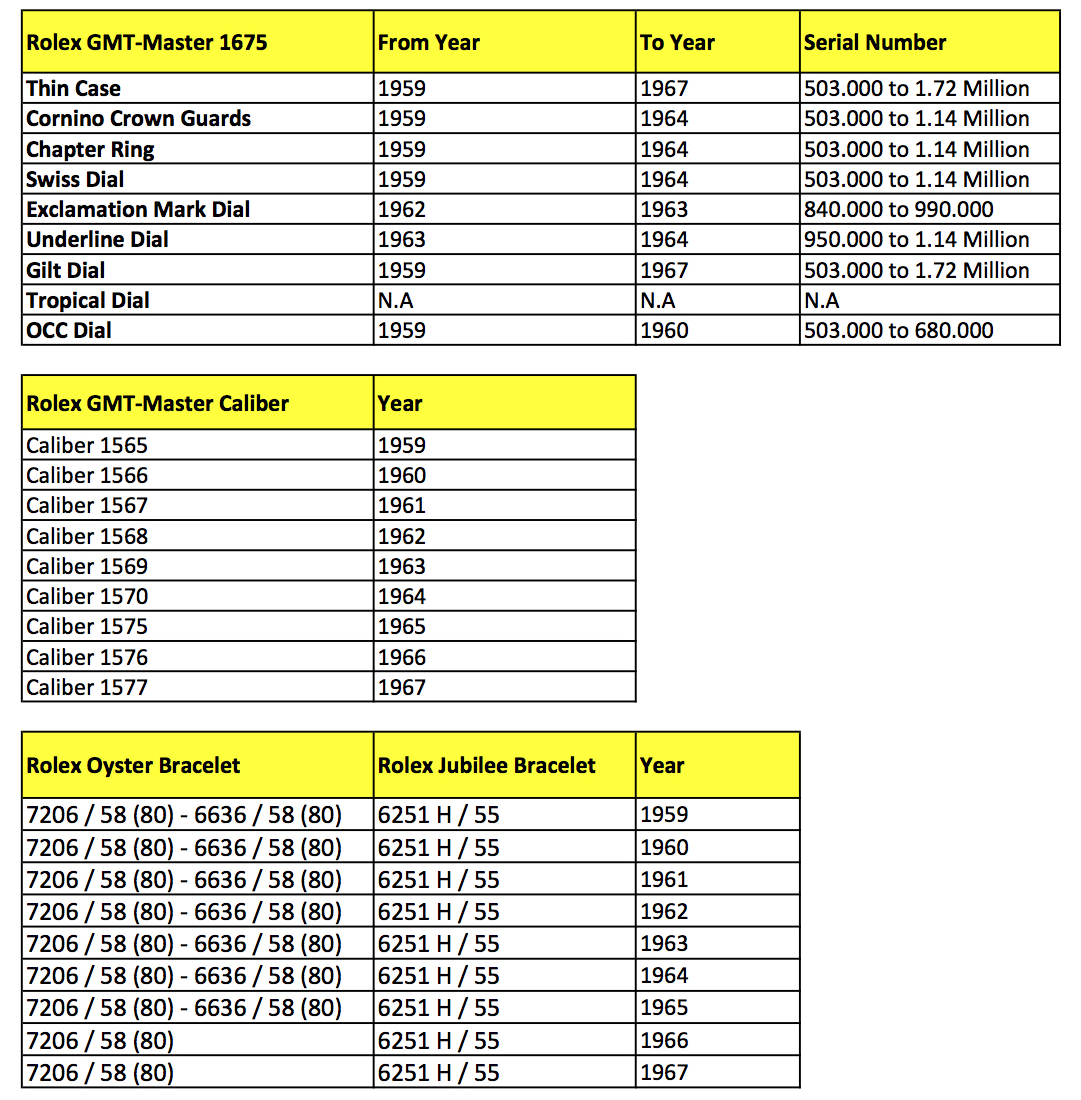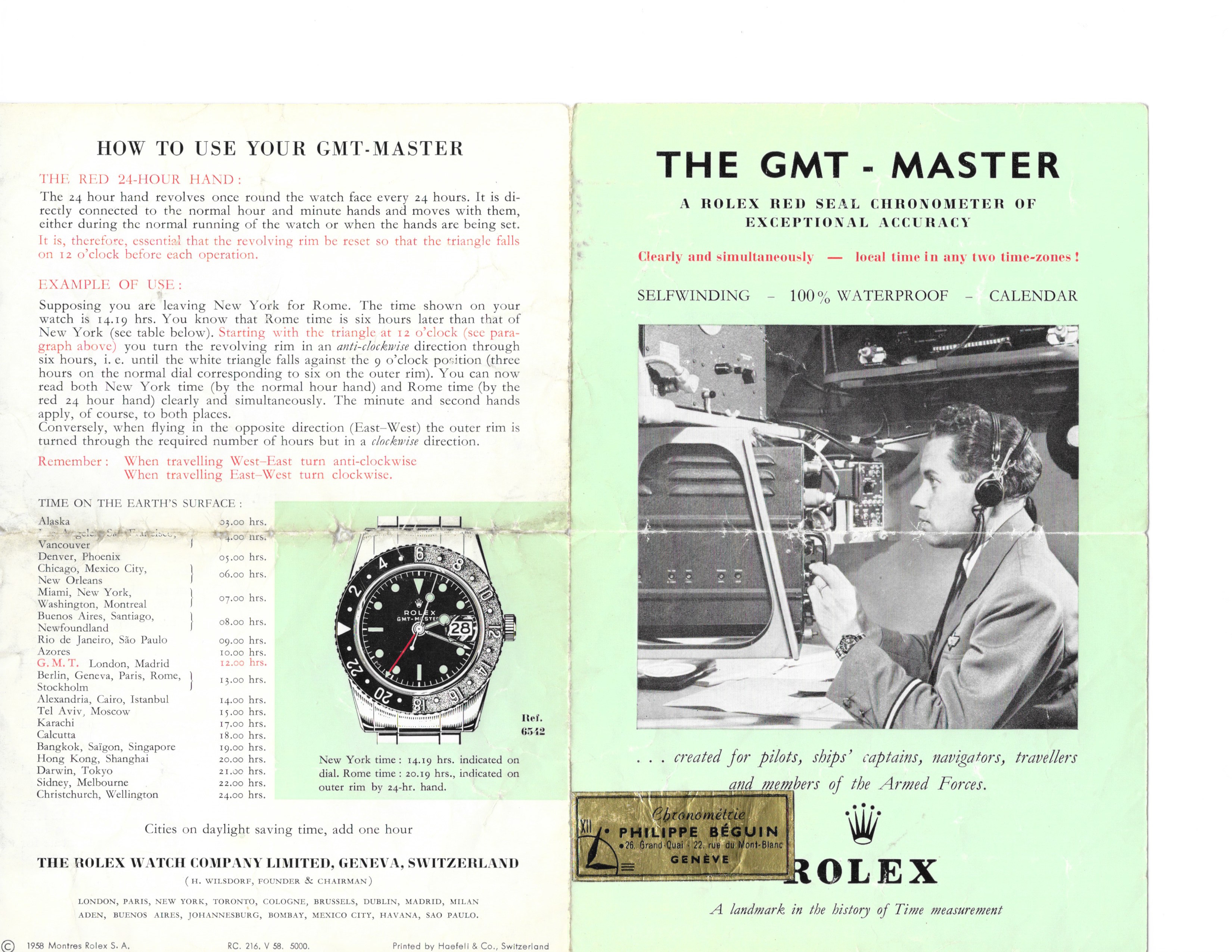A Legend is Born
The late 50’s and 60’s era brought about a boom in globalization that enabled people to travel farther allowing the airline business to flourish as the demand for long haul flights skyrocketed. This new trend led to one of the worlds most famous corporate collaborations – the Pan Am and Rolex project. In an effort to better equip its pilots with reliable tools Pan Am approached Rolex to develop a watch capable of keeping track of two time zones. Rolex being the world’s most influential tool watch manufacturer delivered with the creation of the GMT-Master.
The first GMT was the reference 6542, also known as the Bakelite for its plastic blue and red colored bezel. The dual colors enabled pilots to distinguish nighttime from daytime hours, a simple yet important feature. Although revolutionary the Bakelite did not come without flaws. Being plastic, the bezel tended to crack easily thus compromising the watch’s integrity. While the absence of crown guards hampered the case’s waterproofness.
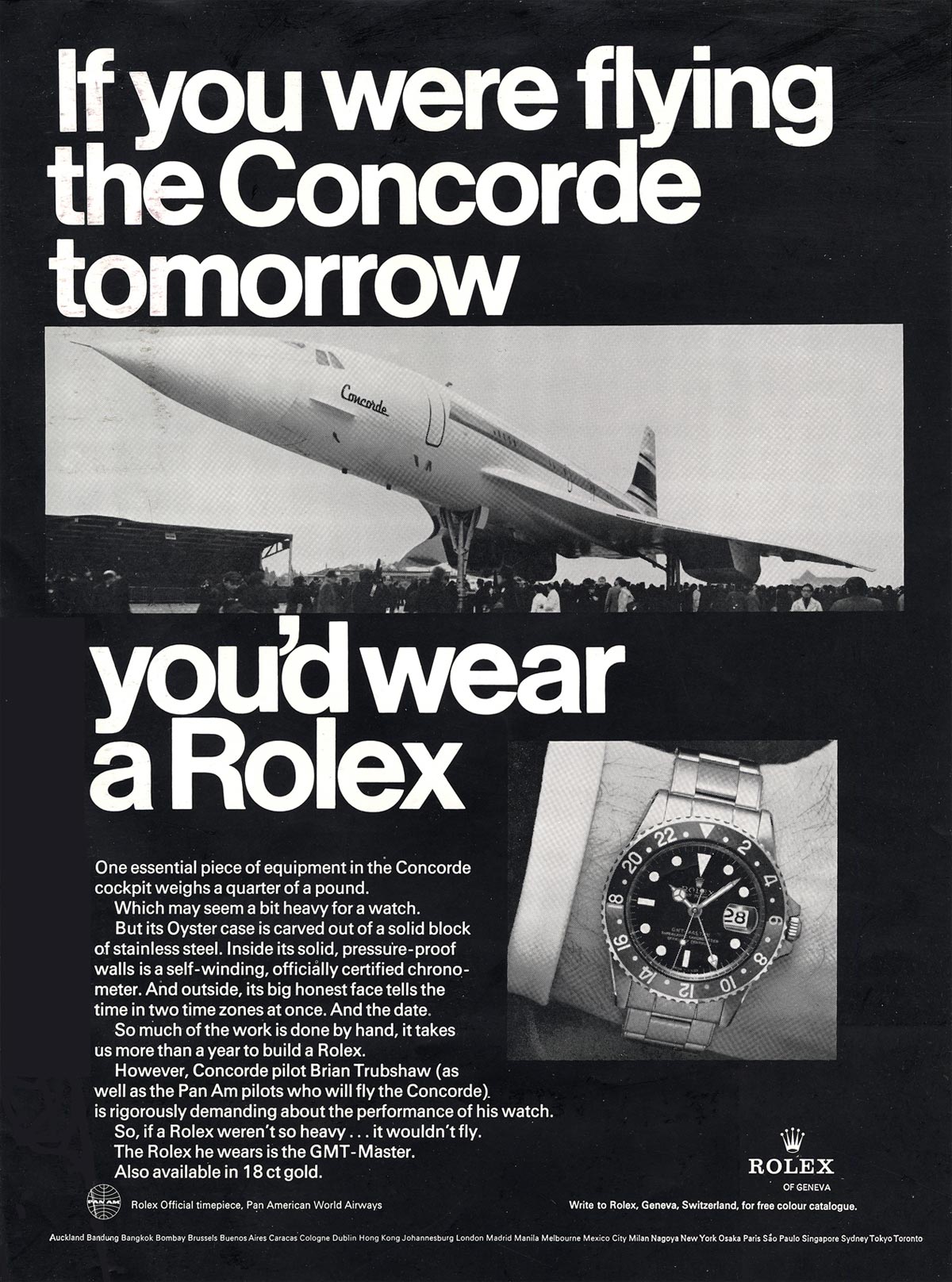
The 6542 series had a production run of 5 years (1954 to 1959) they were then replaced by our beloved 1675’s. These post 6542’s knocked it out of the park, most specifically those manufactured between 1959 and 1967 (serials ranging from 503.000 and 1.720.000).
Early executions of the GMT will remain our favorites as they came with certain intricacies no longer found and celebrated.
Thin Case
Early GMT’s were manufactured in thin metal casings, only later would Rolex shift to the beefier cases that are now commonly seen. Sadly Rolex phased these out rather quick as they were seen as structurally flawed. But gladly they produced them long enough to allow us to collect and share them with our peers. Thin cased GMT’s have a distinguished look best appreciated when observing the watch from its sides. They are also phenomenally comfortable. Look for GMT’s manufactured between 1959 and 1967.
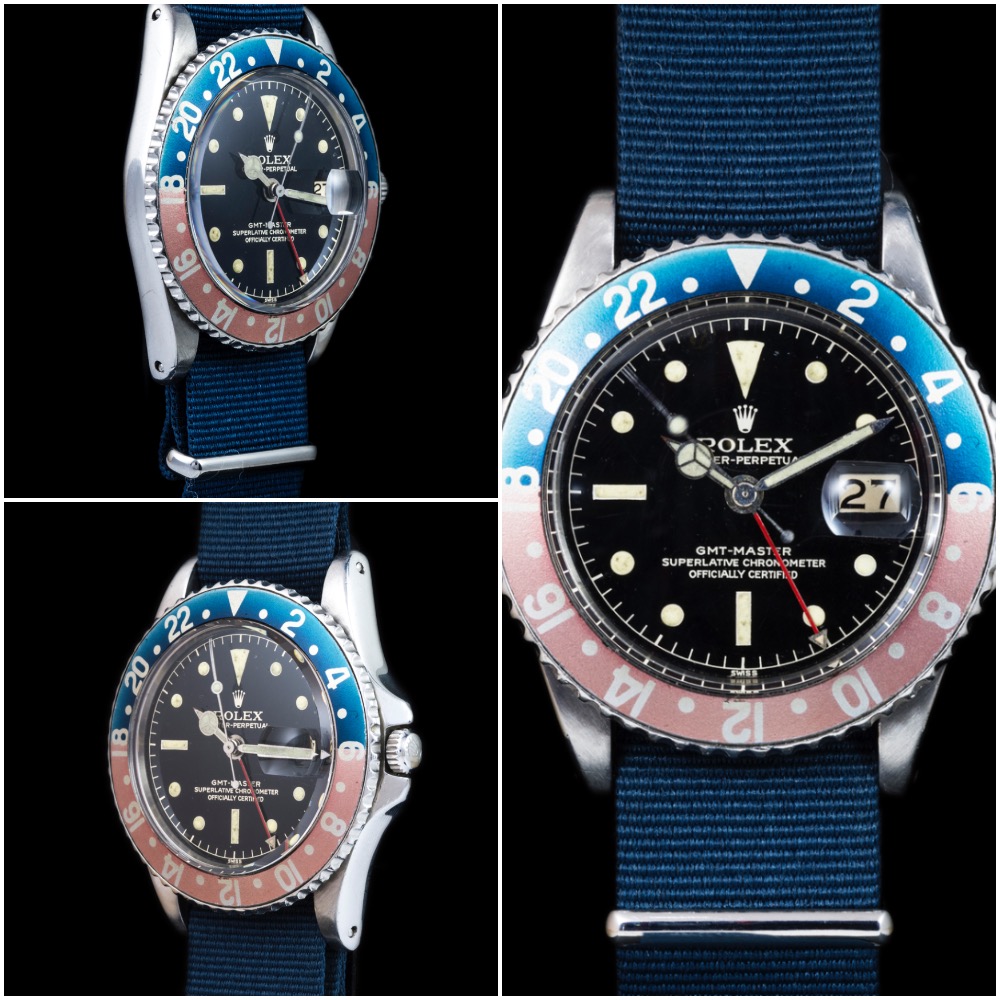
Cornino Crown Guards
The famed Cornino crown guards are as beautiful as they are sought after. Cases with these guards were only manufactured from 1959 to 1964, which in Rolex numbers is incredibly limited. The incorporation of crown guards came as a result of a desire to make sturdier GMT’s, as 6542 although beautiful proved to be fragile. The term Cornino came about due to their resemblance to bull horns. Rolex later replaced these guards with thicker squared shaped ones.
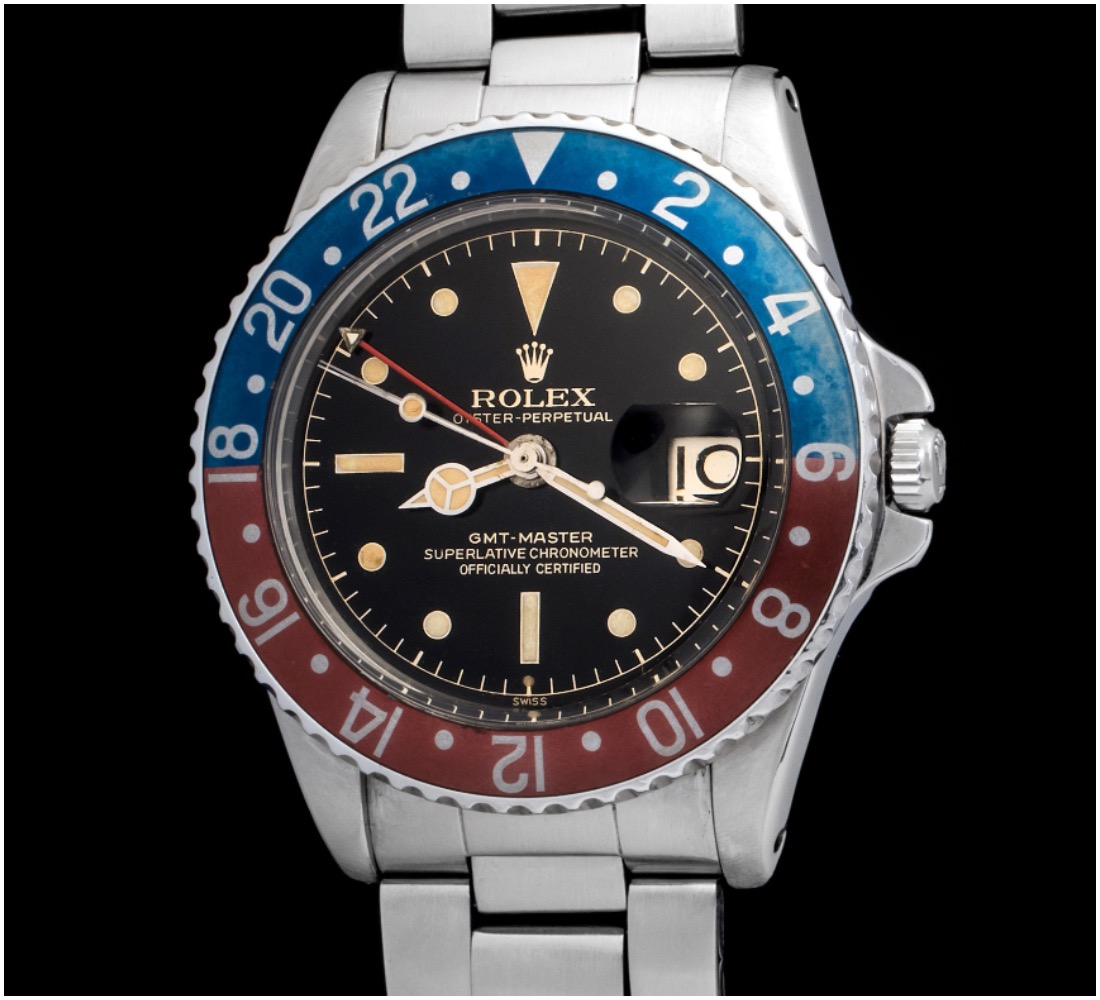
Chapter Ring Dial
Chapter Ring bearing GMT’s are our favorites as they look so cool and in a way pay homage to their predecessor the 6542. For those unsure what a chapter ring is here’s a short lesson. A Chapter Ring is a line connecting the minute marks while separating the Swiss text located below the 6 o’clock. In vintage Rolex collecting the devil is always in the details and those intricacies that might seem insignificant to some mean the world of a difference to the staunchest of collectors.
Chapter ring dials will only be found on 1675 GMT’s belonging to serials between 503.000 and 1.140.000 or those manufactured throughout 1959 and 1964.
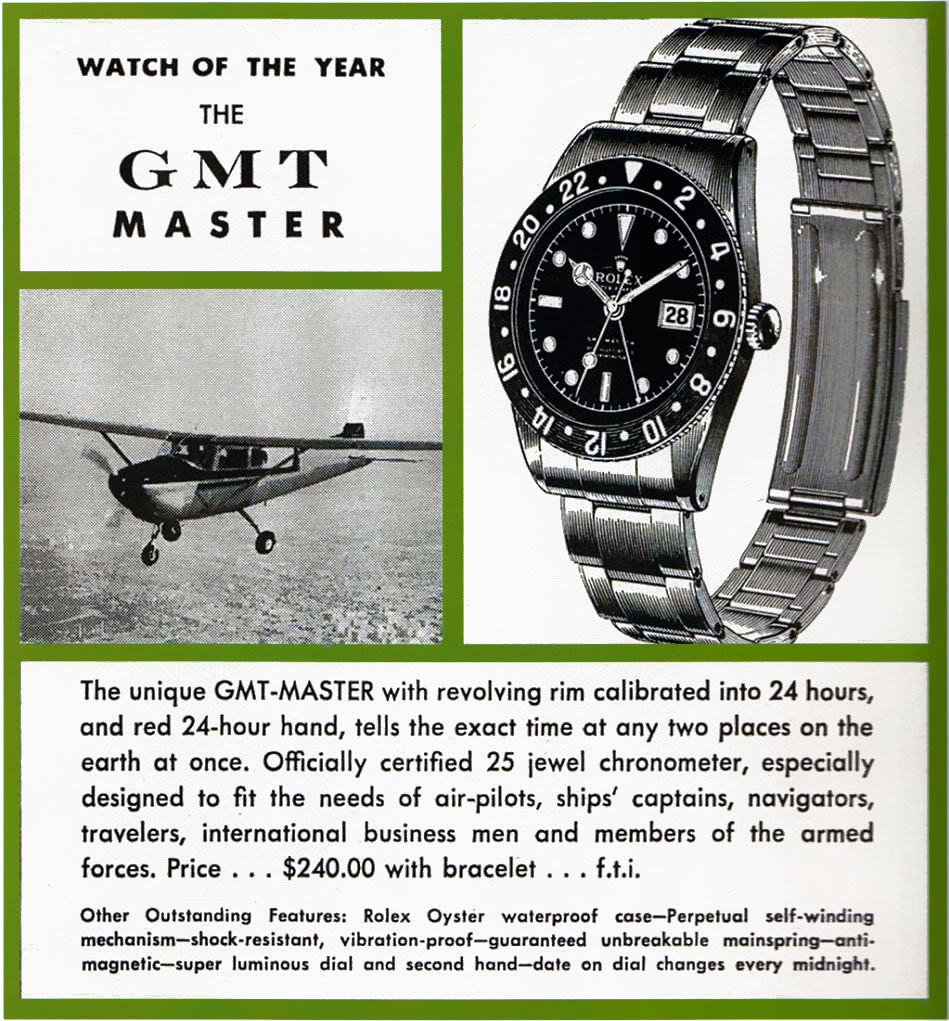
Swiss Dial
Like the Chapter Ring covered above Swiss dials too were original to the 6542. This lettering at the foot of the dial lasted from 1954 with the 6542 until 1964 when Rolex halted their production. For those wondering the significance of the Swiss designation here it is – Swiss dials indicate the presence of Radium as the source of the dial’s luminescence. For collectors and admirers of the brand early Swiss dials are important as they belong to an era when Rolex was just an outstanding tool watchmaker and not a luxury powerhouse.
These dials can be found on 1675’s belonging to serials between 503.000 and 1.140.000 or those manufactured throughout 1959 and 1964.
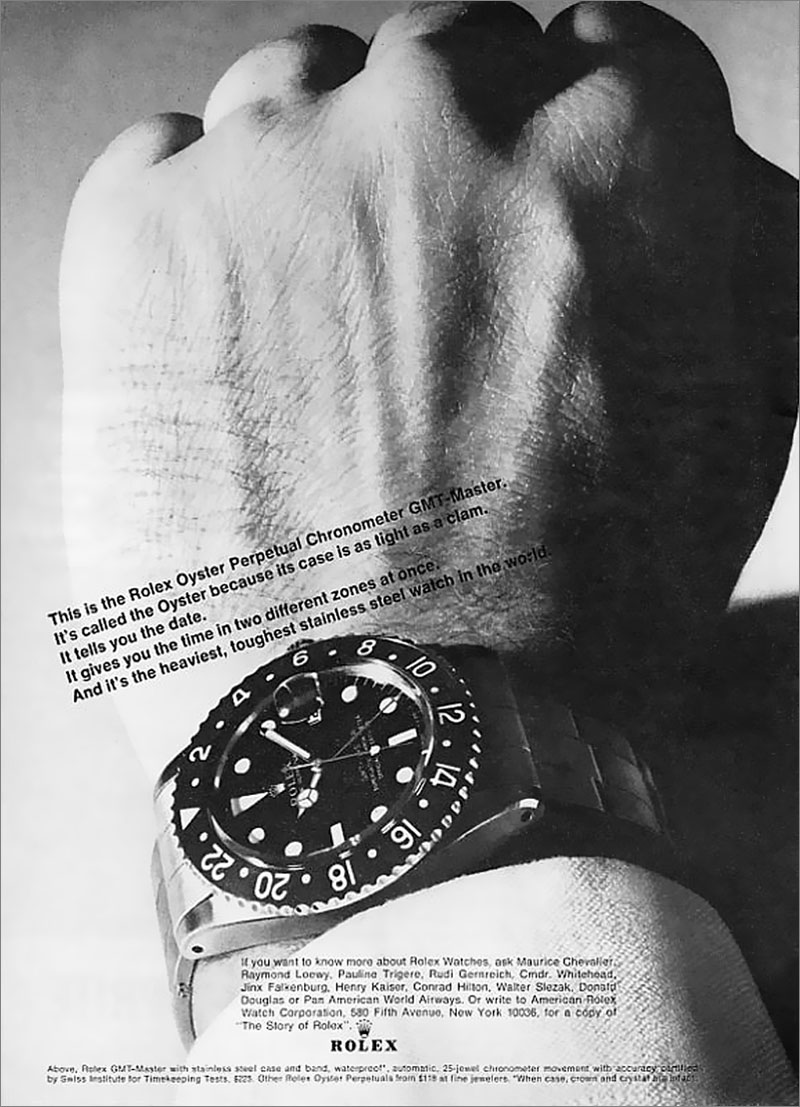
Double Swiss
For a very short period between 1963 and 1964 (Serials 950.000 and 1.140.000) Rolex printed a special set of dials marked with a double Swiss signature below the 6 o’clock mark. The first Swiss is immediately visible while the second can barely be seen as it’s located at the very edge of the dial.
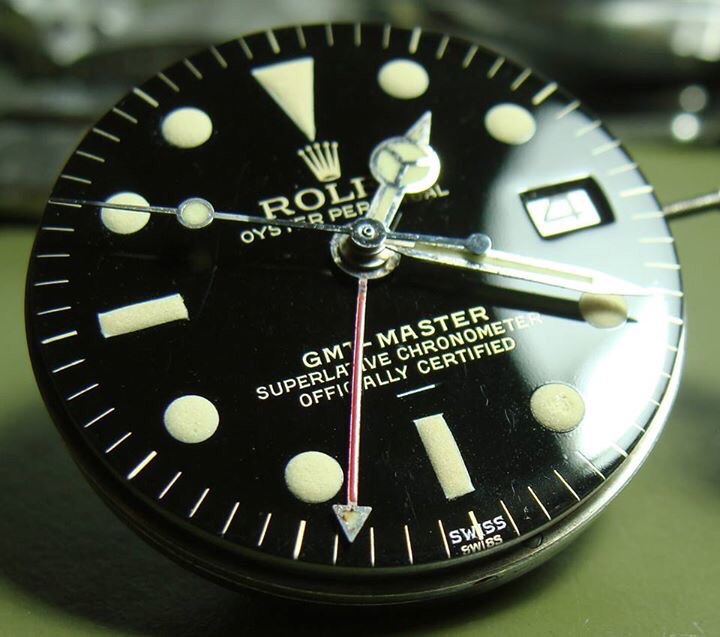
Exclamation Mark Dial
The famous Exclamation Mark dial came due to new international regulations, which limited the quantities of Radium allowed to be applied on dials. These special dials also belong on early GMT’s. After the regulations were made effective Rolex had no other choice than to comply. They did so by printing a very small exclamation mark place directly above “Swiss”. This showed people the dial still had Radium but lesser quantities.
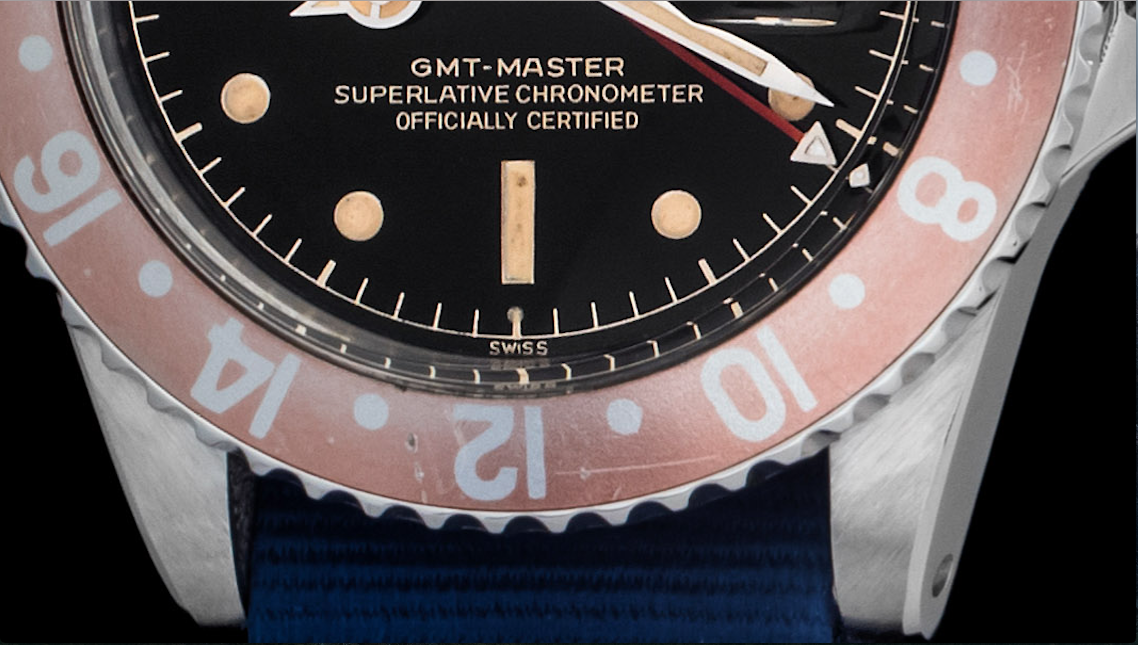
Underline Dial
Another show of compliance to the new international regulations was the Underline dial. This detail on the dial signified a complete change from Radium to a Tritium as the source of luminescence. Again, these dials are only found on early GMT’s and are seen as incredibly collectible as they were only printed for 1 year.
Underlines belong on GMT’s with serials between 950.000 and 1.140.000 or those manufactured in 1963 and 1964.

Gilt Dial
We enter into Gilt territory. This subject has been discussed in wide detail, as these types of dials were not just fitted on GMT’s but on every Rolex sports watch. Due to the complicated process of manufacturing Rolex stopped making them after the 60’s. For some context about what Gilt is and how they come about we have briefly highlighted their process of manufacture below:
Step 1
Gilt dials started off as circular copper plates
Step 2
Wordings and designations were later invisibly stamped onto the copper dial
Step 3
The copper dial was later dipped into a galvanic substance, which electrified the plate prompting the dial’s lettering to become visible
Step 4
Dials were later given a lacquer coat and applied with its respective luminous material
As time has passed the wording on these dials have taken a slight golden color hence the term gilt. Look for a gilt GMT dial on those with serials ranging from 503.000 to 1.720.000 or manufactured between 1959 and 1967. Also expect to pay a premium.
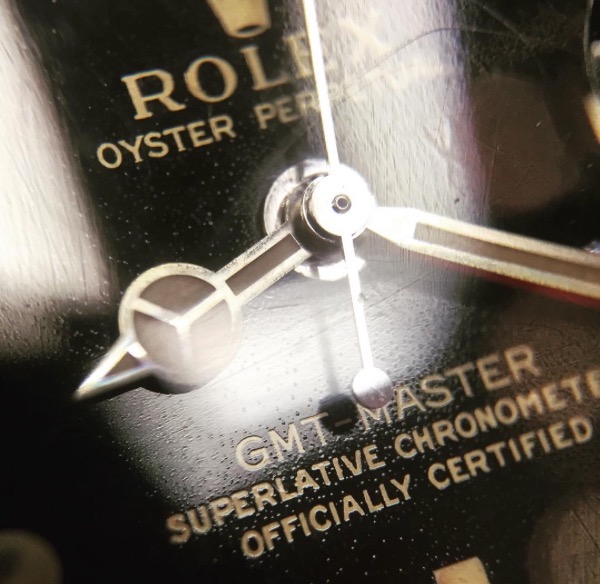
Tropical Dial
Out of every dial variation highlighted so far the Tropical dial remains the king. Reason is they are very easy to spot there is no need for a loupe to pin them down. Tropical dials were born black but due to chemical reactions on the lacquer coat the black color began to turn brown. The interesting aspect about these is that no two will ever be the same. Each Tropical dial has a certain detail that makes it special and unique.

OCC Dial vs. SCOC Dial
Dials printed with certain words and designations command premiums we have covered various examples above. This brings us to GMT dials printed with the words “Officially Certified Chronometer” versus those with “Superlative Chronometer Officially Certified”. (We advise that before you delve into this section you read our short explanation of an OCC dial and a SCOC dial.)
For a period of 12 months (1959-1960) Rolex forgot to acknowledge the fact that the 1675 were powered by a SCOC certified 1565 caliber yet their dials were only claiming to be OCC certified. The 6542’s were the first and last GMT to have OCC calibers. Naturally 1675’s with OCC dials are incredibly difficult to find and those available will carry a steep premium. And for those wondering a 6542 dial cannot be fitted on a 1675 due to sizing constraints.
If you are looking to collect one these you should focus on 1675’s with serials ranging from 503.000 to 550.000 or those manufactured throughout 1959 and the middle of 1960.
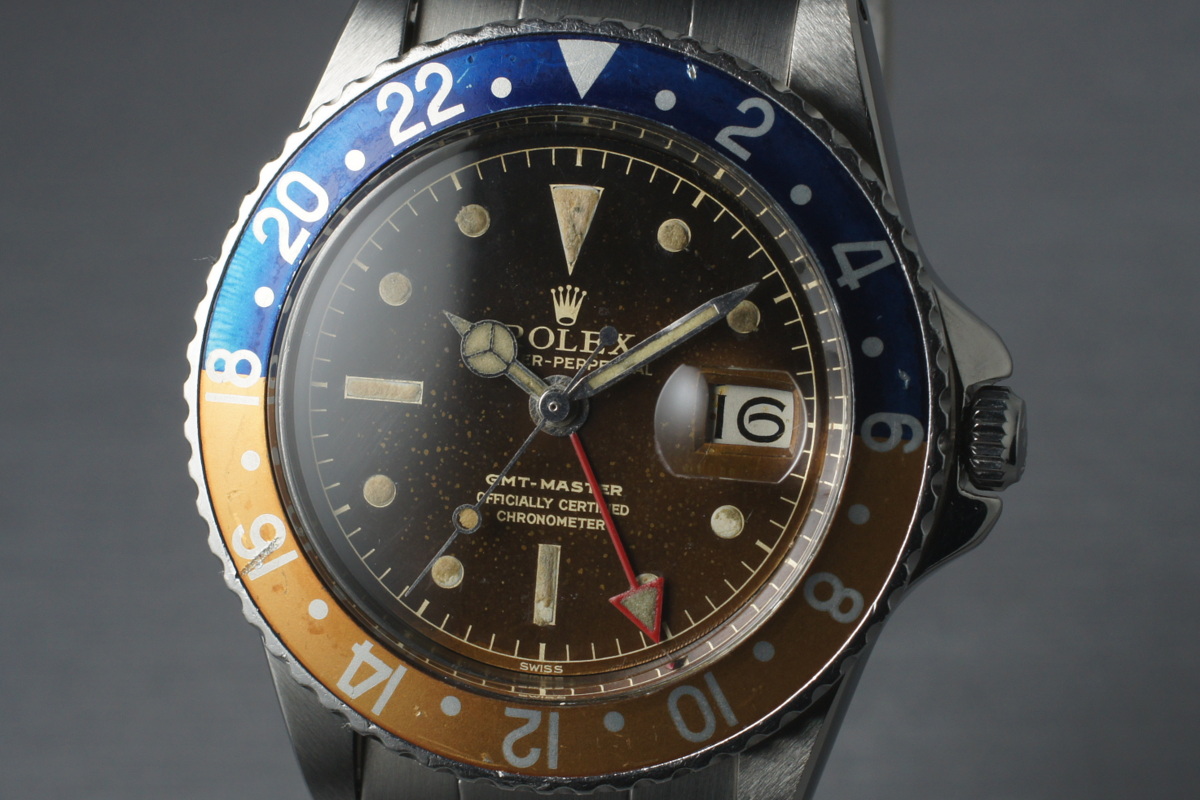
Technical Information
